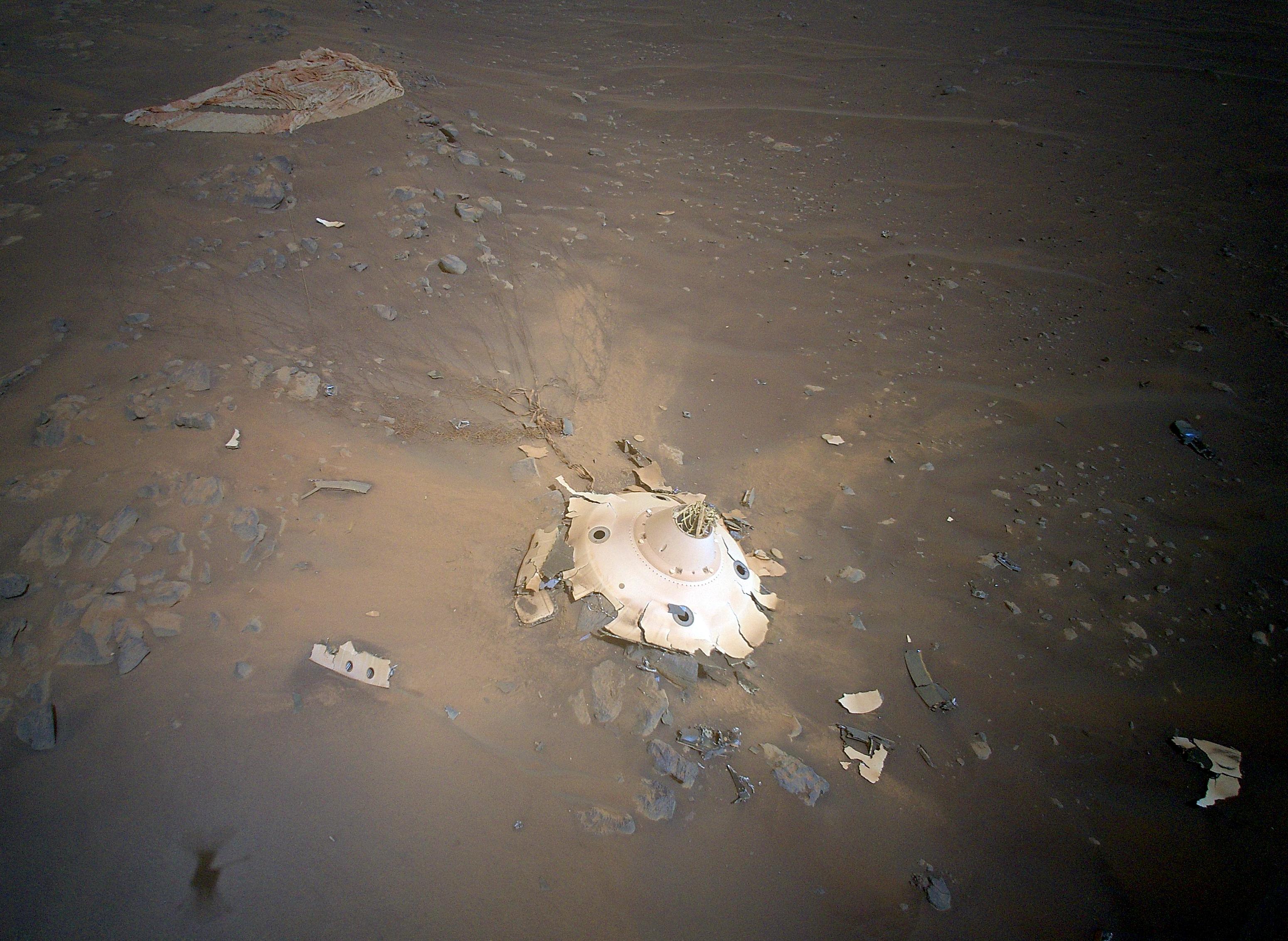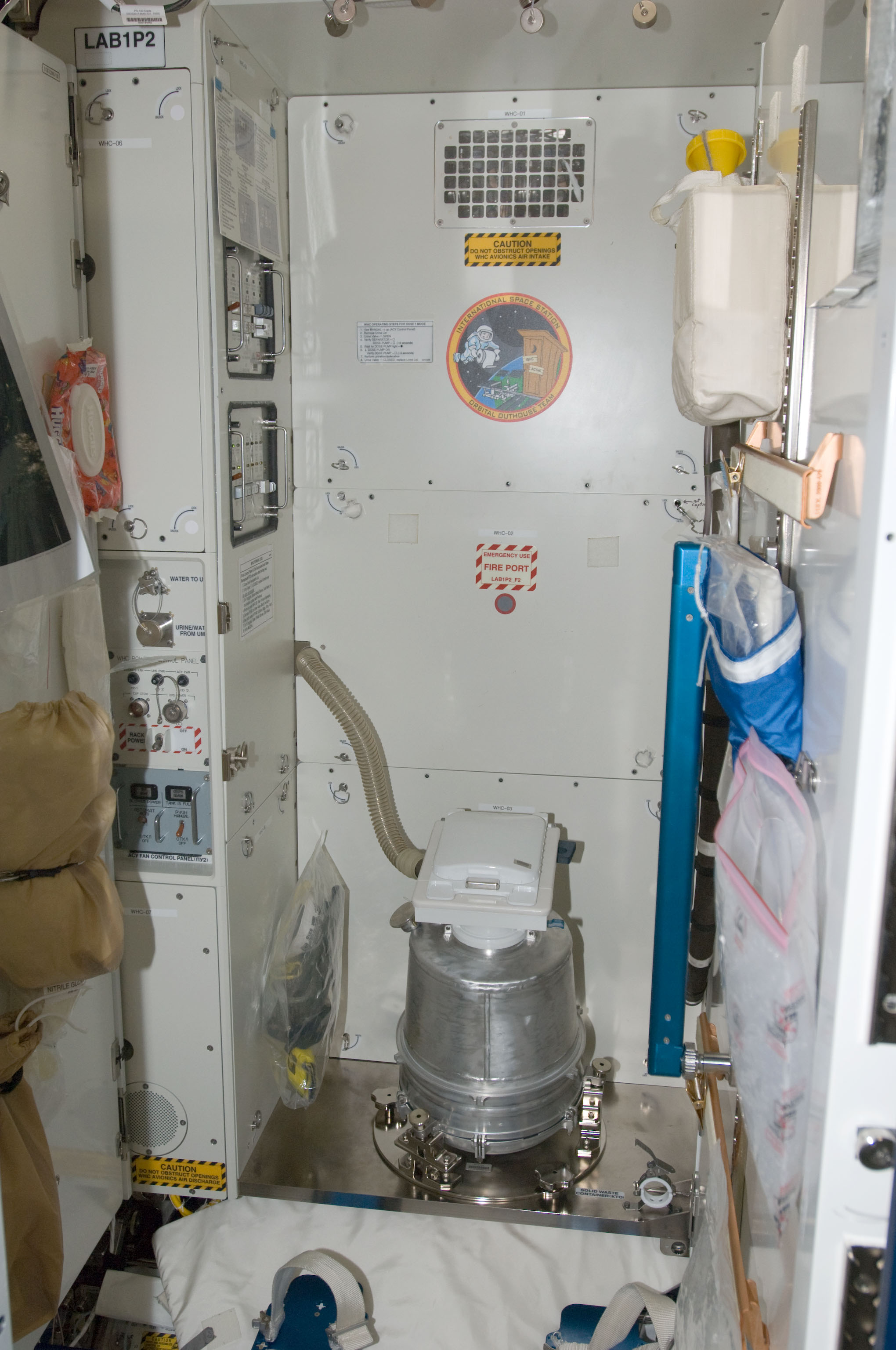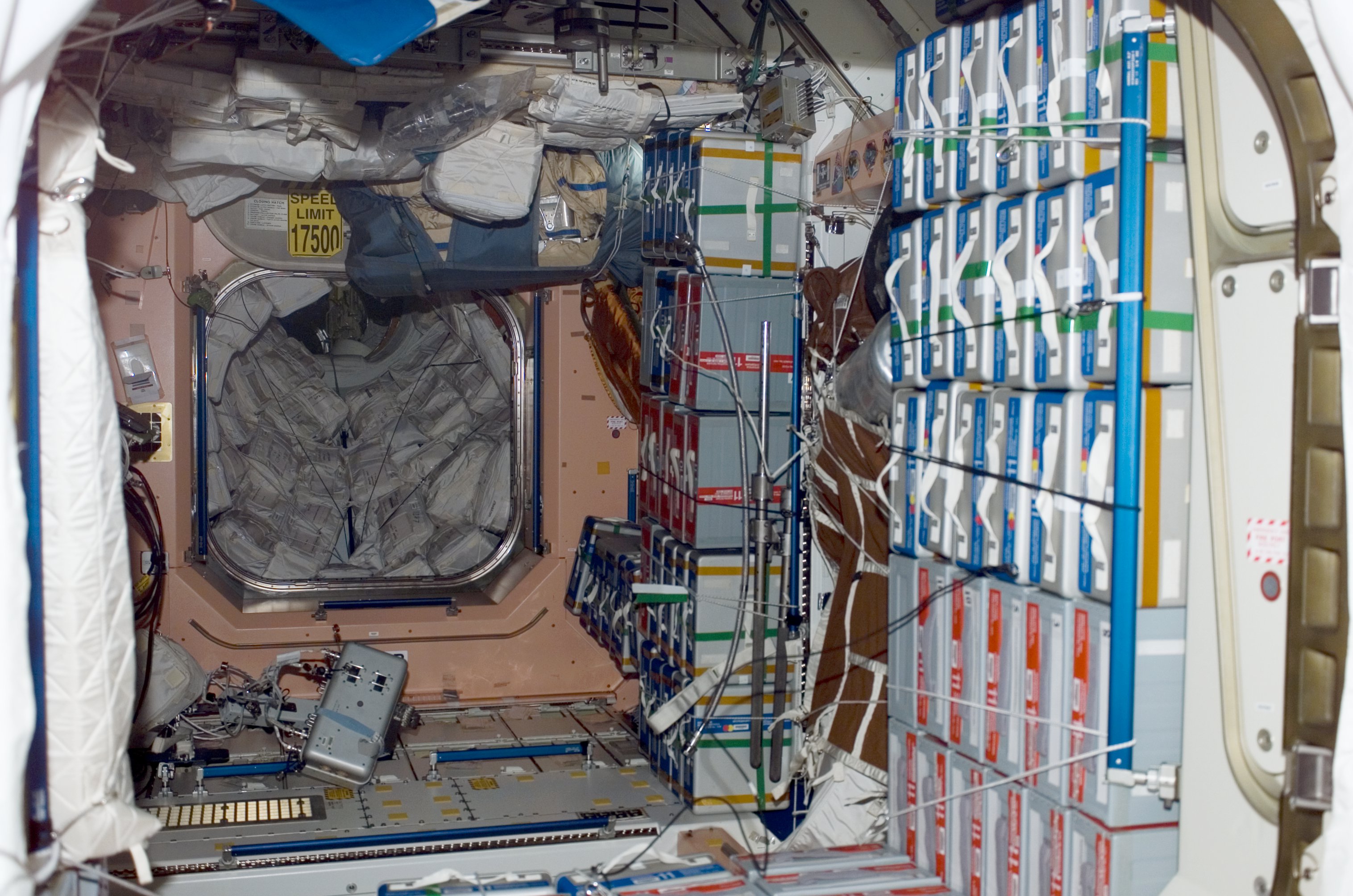|
International Space Station Archaeological Project
The International Space Station Archaeological Project (ISSAP) is a research group working in the areas of space and contemporary archaeology. It is the first full-scale archaeological investigation of human activity in space, studying the International Space Station (ISS) as an archaeological site. It started in 2015. The project's goals are to understand human adaptations to the space environment (especially isolation, confinement, and microgravity), to identify disjunctions between how parts of the space station were designed to be used and how they are actually used, and to show how the social sciences can contribute to improving life in space. ISSAP is led by Justin Walsh (Chapman University) and Alice Gorman (Flinders University). The ISS is an ideal site for archaeological study because it is the first permanent human habitat in space. It has been continuously inhabited since November 2, 2000, and has had almost 300 visitors from more than 20 countries. Although it is not p ... [...More Info...] [...Related Items...] OR: [Wikipedia] [Google] [Baidu] |
Space Archaeology
In archaeology, space archaeology is the research-based study of various human-made items found in space, their interpretation as clues to the adventures humanity has experienced in space, and their preservation as cultural heritage. It includes launch complexes on Earth, orbital debris, satellites, and objects and structures on other celestial bodies such as the Moon and Mars. It also includes the applied field of cultural resource which evaluates the significance of space sites and objects in terms of national and international preservation laws. Cultural resource looks at what, how and why these artifacts of our recent history should be preserved for future generations. Cultural heritage Space tourism could affect archaeological artifacts, for example, on the Moon. Conference paper from Archaeology for Space SymposiumThLunar Land Management System began in January 2007 and is currently based in the Mojave Desert of California at the Mojave Spaceport. The Mojave Spaceport is " ... [...More Info...] [...Related Items...] OR: [Wikipedia] [Google] [Baidu] |
Computer Vision
Computer vision tasks include methods for image sensor, acquiring, Image processing, processing, Image analysis, analyzing, and understanding digital images, and extraction of high-dimensional data from the real world in order to produce numerical or symbolic information, e.g. in the form of decisions. "Understanding" in this context signifies the transformation of visual images (the input to the retina) into descriptions of the world that make sense to thought processes and can elicit appropriate action. This image understanding can be seen as the disentangling of symbolic information from image data using models constructed with the aid of geometry, physics, statistics, and learning theory. The scientific discipline of computer vision is concerned with the theory behind artificial systems that extract information from images. Image data can take many forms, such as video sequences, views from multiple cameras, multi-dimensional data from a 3D scanning, 3D scanner, 3D point clouds ... [...More Info...] [...Related Items...] OR: [Wikipedia] [Google] [Baidu] |
Tranquility (ISS Module)
''Tranquility'', also known as Node 3, is a module of the International Space Station (ISS). It contains environmental control systems, life support systems, a toilet, exercise equipment, and an observation Cupola (ISS module), cupola. The European Space Agency (ESA) and the Italian Space Agency (ASI) had ''Tranquility'' manufactured by Thales Alenia Space. A ceremony on 20 November 2009 transferred ownership of the module to NASA. On 8 February 2010, NASA launched the module on the Space Shuttle's STS-130 mission. Design and manufacturing ''Tranquility'' was built within the ESA-NASA ISS bartering system. ESA committed to build and fund both Harmony (ISS module), ''Harmony'' and ''Tranquility'' as well as the Automated Transfer Vehicle, ATV in order to use NASA ISS facilities, fly astronauts on the Shuttle and for other ISS services. ESA teamed up with the Italian Space Agency (ASI) to Manufacturing of the International Space Station, manufacture both ''Harmony'' and ''T ... [...More Info...] [...Related Items...] OR: [Wikipedia] [Google] [Baidu] |
Unity (ISS Module)
''Unity'', also known as Node 1, is the first U.S.-built component of the International Space Station (ISS). This cylindrical module, constructed of steel by Boeing for NASA, serves as the critical link between the orbiting laboratory's Russian Orbital Segment and US Orbital Segment. ''Unity'' was launched on 4 December 1998, aboard the on STS-88. Two days later it was berthed to the previously launched ''Zarya'' module, marking the first connection between ISS components. Its six Common Berthing Mechanism (CBM) locations ( forward, aft, port, starboard, zenith, and nadir) facilitate connections to other modules. At launch, two CBM locations were fitted with Pressurized Mating Adapters (PMA), one of which enabled the mating with ''Zarya''. Measuring in diameter and in length, ''Unity'' was built at NASA's Marshall Space Flight Center. It is the first of three connecting modules, joined by ''Harmony'' and ''Tranquility''. Launch and initial berthing ''Unity'' (with i ... [...More Info...] [...Related Items...] OR: [Wikipedia] [Google] [Baidu] |
Destiny (ISS Module)
The ''Destiny'' module, also known as the U.S. Lab, is the primary operating facility for United States, U.S. research payloads aboard the International Space Station (ISS). It was berthed to the forward port of the ''Unity (ISS module), Unity'' module and activated over a period of five days in February, 2001. ''Destiny'' is NASA's first permanent operating orbital research station since Skylab was vacated in February 1974. The Boeing Company began construction of the research laboratory in 1995 at the Michoud Assembly Facility and then the Marshall Space Flight Center in Huntsville, Alabama, Huntsville, Alabama. ''Destiny'' was shipped to the Kennedy Space Center in Florida in 1998, and was turned over to NASA for pre-launch preparations in August 2000. It launched on February 7, 2001 aboard the on STS-98. Astronauts work inside the pressurized facility to conduct research in numerous scientific fields. Scientists throughout the world would use the results to enhance their ... [...More Info...] [...Related Items...] OR: [Wikipedia] [Google] [Baidu] |
Harmony (ISS Module)
''Harmony'', also known as ''Node 2'', is the "utility hub" of the International Space Station. It connects the laboratory modules of the United States, Europe and Japan, as well as providing electrical power and electronic data. Sleeping cabins for four of the crew are housed here. ''Harmony'' was successfully launched into space aboard Space Shuttle flight STS-120 on 23 October 2007. After temporarily being attached to the port side of the Unity (ISS module), ''Unity'' module, it was moved to its permanent location on the forward end of the Destiny (ISS module), ''Destiny'' module on 14 November 2007. ''Harmony'' added to the station's living volume, an increase of almost 20%, from to . Its successful installation meant that from NASA's perspective, the station was considered to be "U.S. Core Complete". Origin of name The unit formerly known as ''Node 2'' was renamed ''Harmony'' in March 2004. The name was chosen in a competition where more than 2,200 students from ... [...More Info...] [...Related Items...] OR: [Wikipedia] [Google] [Baidu] |
Columbus (ISS Module)
''Columbus'' is a science laboratory that is part of the International Space Station (ISS) and is the largest single contribution to the ISS made by the European Space Agency (ESA). Like the ''Harmony (ISS module), Harmony'' and ''Tranquility (ISS module), Tranquility'' modules, the ''Columbus'' laboratory was constructed in Turin, Italy by Thales Alenia Space. The functional equipment and software of the lab was designed by Airbus, EADS in Bremen, Germany. It was also integrated in Bremen before being flown to the Kennedy Space Center (KSC) in Florida in an Airbus Beluga. It was launched aboard on 7 February 2008, on flight STS-122. It is designed for ten years of operation. The module is controlled by the Columbus Control Centre, located at the German Space Operations Center, part of the German Aerospace Center in Oberpfaffenhofen near Munich, Germany. The European Space Agency has spent Euro, €1.4 billion (about United States dollar, US$2 billion) on building ''Columbu ... [...More Info...] [...Related Items...] OR: [Wikipedia] [Google] [Baidu] |
Kibō (ISS Module)
, also known as the Japanese Experiment Module (JEM), is a Japanese science module for the International Space Station (ISS) developed by JAXA. It is the largest single ISS module, and is attached to the Harmony (ISS module), ''Harmony'' module. The first two pieces of the module were launched on Space Shuttle missions STS-123 and STS-124. The third and final components were launched on STS-127. Components In initial configuration, ''Kibō'' consisted of six major elements: * Pressurized Module (PM) * Exposed Facility (EF) * Experiment Logistics Module (ELM) Pressurized Section (ELM-PS) * Experiment Logistics Module (ELM) Exposed Section (ELM-ES) * Japanese Experiment Module remote manipulator system (JEMRMS) * Inter-orbit communication system (ICS) Pressurized Module The Pressurized Module (PM) is the core component connected to the port hatch of Harmony (ISS module), ''Harmony''. It is cylindrical in shape and contains twenty-three International Standard Payload Racks ( ... [...More Info...] [...Related Items...] OR: [Wikipedia] [Google] [Baidu] |
US Orbital Segment
The US Orbital Segment (USOS) is the name given to the components of the International Space Station (ISS) constructed and operated by the United States National Aeronautics and Space Administration (NASA), European Space Agency (ESA), Canadian Space Agency (CSA) and Japan Aerospace Exploration Agency (JAXA). The segment consists of eleven pressurized components and various external elements, almost all of which were delivered by the Space Shuttle. The segment is monitored and controlled from various mission control centers around the world including Johnson Space Center in Houston, Texas, Columbus Control Centre in Oberpfaffenhofen, Germany and Tsukuba Space Center in Tsukuba, Japan. However, it depends on the Russian Orbital Segment for essential flight control, orbital station-keeping and life support systems. Modules The US Orbital Segment consists of 10 pressurized modules. Of these, seven are habitable, and three are connecting nodes with large ports. The ports are ... [...More Info...] [...Related Items...] OR: [Wikipedia] [Google] [Baidu] |
Kayla Barron
Kayla Jane Barron ( Sax; born September 19, 1987) is an American submarine warfare officer, engineer, and NASA astronaut. She was selected in June 2017 as a member of the NASA Astronaut Group 22, and later qualified as an astronaut in 2020. She took part in her first spaceflight, SpaceX Crew-3, as part of the crew of Expedition 66/ 67, which launched to the International Space Station on November 10, 2021. Before joining NASA, she was a submarine warfare officer and Flag Aide to the Superintendent at the Naval Academy. Early life and education Kayla Barron was born on September 19, 1987, in Pocatello, Idaho, to Lauri and Scott Sax. Her family moved to Richland, Washington, where she graduated from Richland High School in 2006. After high school, Barron attended the United States Naval Academy, where she graduated in 2010 with a Bachelor of Science degree in systems engineering. While at the Naval Academy, Barron was a member of the Midshipmen cross country and track teams. F ... [...More Info...] [...Related Items...] OR: [Wikipedia] [Google] [Baidu] |
Expedition 66
Expedition 66 was the 66th long-duration expedition to the International Space Station. The mission began after the departure of Soyuz MS-18 on 17 October 2021. It was commanded by European Space Agency astronaut Thomas Pesquet, the fourth European astronaut and first French astronaut to command the ISS until 8 November 2021 when Russian cosmonaut Anton Shkaplerov, who arrived aboard Soyuz MS-19, took over his command. Pesquet was transported to the ISS on SpaceX Crew-2 in April 2021, joined by NASA astronauts Shane Kimbrough and Megan McArthur and Japan Aerospace Exploration Agency (JAXA) astronaut Akihiko Hoshide. Crew-2 from Expedition 65 extended their tour of duty on the ISS to become part of Expedition 66, along with Russian cosmonaut Pyotr Dubrov and NASA astronaut Mark Vande Hei, who both launched on Soyuz MS-18 and returned to Earth on Soyuz MS-19, following their extended mission. Russian cosmonaut Shkaplerov launched on Soyuz MS-19, along with two participants ... [...More Info...] [...Related Items...] OR: [Wikipedia] [Google] [Baidu] |
Center For The Advancement Of Science In Space
The Center for the Advancement of Science in Space (CASIS), a non-profit organization, is the manager of the International Space Station United States National Laboratory, a US government-funded laboratory with principal research facilities located in the United States Orbital Segment of the International Space Station (ISS). History The 2005 NASA Authorization Act designated the US segment of ISS as a National Lab in order to "...help improve life on Earth, foster relationships among NASA, other Federal agencies, and the private sector, and advance STEM education through utilization of unique ISS Capabilities in microgravity." In the NASA Authorization Act of 2010, Congress directed NASA to select an entity to manage the US National Laboratory. In August 2011, NASA entered into a 10-year agreement with CASIS in order to maximize the use of the ISS US segment as a National Laboratory. Since CASIS began managing the National Lab in 2011, the organization has selected more than ... [...More Info...] [...Related Items...] OR: [Wikipedia] [Google] [Baidu] |






